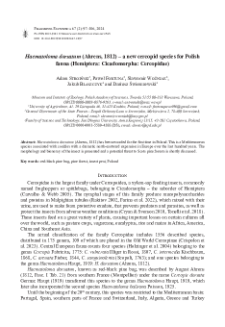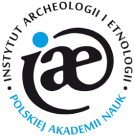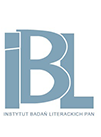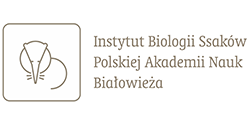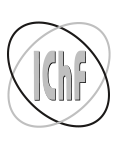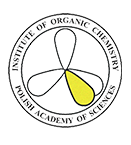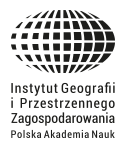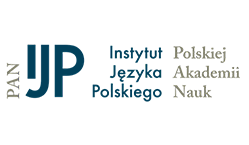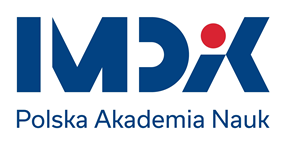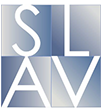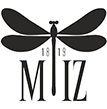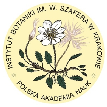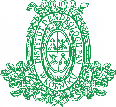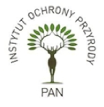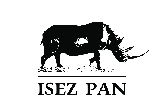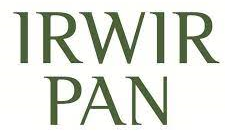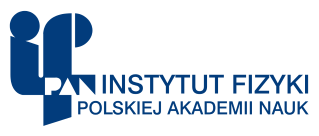- Search in all Repository
- Literature and maps
- Archeology
- Mills database
- Natural sciences
Advanced search
Advanced search
Advanced search
Advanced search
Advanced search

Object
Title: Haematoloma dorsatum (Ahrens, 1812) – a new cercopid species for Polish fauna (Hemiptera: Cicadomorpha: Cercopidae)
Creator:
Stroiński, Adam
![]()
![]() ;
Fortuna, Paweł
;
Fortuna, Paweł
![]() ;
Woźniak, Sławomir
;
Woźniak, Sławomir
![]() ;
Błaszczyk, Jakub
;
Błaszczyk, Jakub
![]() ;
Świerczewski, Dariusz
;
Świerczewski, Dariusz
![]()
![]()
Date issued/created:
Resource type:
Subtitle:
Haematoloma dorsatum in Poland ; Haematoloma dorsatum (Ahrens, 1812) – występowanie przekraski sosnówki (Hemiptera: Cicadomorpha: Cercopidae) w Polsce
Publisher:
Muzeum i Instytut Zoologii Polskiej Akademii Nauk
Place of publishing:
Description:
Type of object:
Abstract:
Haematoloma dorsatum (Ahrens, 1812) has been recorded for the first time in Poland. This is a Mediterranean species associated with conifers with a dramatic north-eastward expansion in Europe over the last hundred years. The morphology and bionomy of the insect is presented and a potential threat to Scots pine forests is shortly discussed.
References:
Ahrens A. 1812. Cercopis dorsata Germ. Fauna insectorum europae. Impensis Car. Aug. Kümmelii, Halae, 1: 21. (the complete work published in the years 1812-1814)
Almeida R.P.P. 2016. Xylella fastidiosa vector transmission biology. In: Brown JK (ed.) Vector‐mediated transmission of plant pathogens. The American Phytopathological Association, St. Paul, USA, pp. 165–173.
Alonso R.H., Bernal E.M. & Fortea V.P. 1992. Haematoloma dorsata (Ahrens) en Aragon. Ecologia 6: 335–340.
Burakowski B., Mroczkowski M. & Stefańska J. 1973. Chrząszcze Coleoptera. Biegaczowate – Carabidae, cz. 1. Katalog fauny Polski, 23, 2, PWN, Warszawa, 232 pp.
Carvalho G.S. & Webb M.D. 2005. Cercopid spittlebugs of New World (Hemiptera: Auchenorrhyncha: Cercopidae). Pensoft Series Faunistica, Volume 49, Pensoft Publishers, 271 pp.
Cobos J.M. 1995. Nota sobre la presencia de Haematoloma dorsatum (Ahrens) en pinares del Sistema Central. Boletinde Sanidad Vegetal Plagas 21: 133–137.
Cornara D., Saponari M., Zeilinger A.R., de Stradis A., Boscia, D., Loconsole G., Bosco D., Martelli G.P.,Almeida R.P.P. & Porcelli F. 2017. Spittlebugs as vectors of Xylella fastidiosa in olive orchards in Italy. Journalof Pest Science 90: 521–530.
Covassi M., Roversi P.F. & Toccafondi P. 1989. Danni da Haematoloma dorsatum (Ahrens) su conifere (Homoptera,Cercopidae). I. Alterazione macroscopiche degli apparati fogliari. Redia 72: 259–275.
Crispolon E.S.Jr, Soulier-Perkins A. & Guilbert E. 2023. Molecular phylogeny of Cercopidae (Hemiptera, Cercopoidea). Zoologica Scripta 52, 494–516. https://doi.org/10.1111/zsc.12597
![]()
Cryan J.R. & Svenson G. 2010. Family-level relationships of the spittlebugs and froghoppers (Hemiptera: Cicadomorpha:Cercopoidea). Systematic Entomology 35: 393–415.
Day K.R., Armour H. & Docherty M. 2004. Population responses of a conifer-dwelling aphid to seasonal changes inits host. Ecological Entomology 29: 555–65. https://doi.org/10.1111/j.0307-6946.2004.00631.x
![]()
Farina P., Bedini S. & Conti B. 2022. Multiple Functions of Malpighian Tubules in Insects: A Review. Insects 13, 1001,1-26. https://doi.org/10.3390/insects13111001
![]()
Frem M., Chapman D., Fucilli V., Choueiri E., Moujabber M.E., Notte P.L. & Nigro F. 2020. Xylella fastidiosainvasion of new countries in Europe, the Middle East and North Africa: Ranking the potential exposure scenarios.NeoBiota 59: 77–97. https://doi.org/10.3897/neobiota.59.53208
![]()
Gierlasiński G. 2024. MapaUTM v. 6. Available from: https://www.heteroptera.us.edu.pl/mapautm.html; accessed on 20 Sep 2024
Giustina della W. 1983. La faune de France des Cercopinae [Hom. Cicadomorpha]. Bulletin de la Société entomologiquede France 88(3-4): 192–196.
Haeseler V. & Niedringhaus R. 1988. Zum Auftreten der schwarzroten Zikade Haematoloma dorsatum (Ahrens) aufder Nordseeinsel Borkum (Homoptera: Auchenorrhyncha: Cercopidae). Braunschweiger Naturkundlichen Schriften 3(1): 273–276.
Harris J.L., Di Bello P.L., Lear M. & Balci Y. 2014. Bacterial leaf scorch in the District of Columbia: distribution, host range, and presence of Xylella fastidiosa among urban trees. Plant Disease 98: 1611–1618.
Haupt H. 1919. Die europäischen Cercopidae Leach. (Bluströpfchen und Schaumzikaden). Entomologisches Jahrbuch 28: 152–172.
Holzinger W., Jantscher E. & Remane R. 1996. Erstnachweise von Zikaden aus Österreich, mit Bemerkungen zuweiteren Arten. Linzer biologische Beiträge 28(2): 1149–1152.
Holzinger W., Kammerlander I. & Nickel H. 2004. The Auchenorrhyncha of Central Europe. Die Zikaden Mitteleuropas. Volume 1: Fulgoromorpha, Cicadomorpha excl, Cicadellidae. Brill, Leiden-Boston, 673 pp.
Inward D.G.I., Wainhouse D. & Peace A. 2012. The effect of temperature on the development and life cycle regulationof the pine weevil Hylobius abietis and potential impacts of climate change. Agricultural and Forest Entomology 14:348–357. https://doi.org/10.1111/j.1461-9563.2012.00575.x
![]()
McGaha L.A., Jackson B., Bextine B., McCullough D. & Morano L. 2007. Potential plant reservoirs for Xylellafastidiosa in South Texas. American Journal of Enology and Viticulture 58: 398–401.
Moraal L.G. 1996. Bionomics of Haematoloma dorsatum (Hom., Cercopidae) in relation to needle damage in pineforests. Anzeiger für Schädlingskunde, Pflanzenschutz, Umweltschutz 69: 114–118. https://doi.org/10.1007/BF01996882
KONDRACKI J. 2013. Geografia regionalna Polski. Wydawnictwo Naukowe PWN, Warszawa, 444 pp.
Nast J. 1933. Beiträge zur Morphologie und geographischen Verbreitung der mitteleuropäischen und mediterranen Arten aus der Subfamilie Cercopinae (Homoptera, Cercopidae). Annales Musei Zoologici Polonici 10: 7–32.
Nickel H. 2003. The leafhoppers and planthoppers of Germany (Hemiptera, Auchenorrhyncha): Patterns and strategiesin a highly diverse group of phytophagous insects. Pensoft Publishers, Sofia-Moscow and Goecke & Evers, Keltern460 pp.
Notario A., Castresana L. & Baragano J.R. 1981. Nota sobre un cercopido, Haematoloma dorsatum (Ahrens), queataca a los pinos. Boletin de Sanidad Vegetal Plagas 7: 157–160.
Rakitov R.A. 2002. Structure and function of the Malpighian tubules, and related behaviors in juvenile cicadas: Evidenceof homology with spittlebugs (Hemiptera: Cicadoidea and Cercopoidea). Zoologischer Anzeiger 241: 117–130.
Reclaire A. 1944. Naamlijst der in Nederland en het aangrenzende gebied waargenomen Cicaden. EntomologischeBerichten, 11(261-263): 221–256.
Rapicavoli J., Ingel B., Blanco-Ulate B., Cantu D. & Roper C. 2018. Xylella fastidiosa: an examination of a reemergingplant pathogen. Molecular Plant Pathology 19: 786–800.
Roversi P.F. & Baccetti C. 1994. Ecologia ed etologia di Haematoloma dorsatum (Ahrens) (Homoptera, Cercopidae). Redia, 77: 133–150.
Roversi P.F., Covassi M. & Toccafondi P. 1989: Danni da Haematoloma dorsatum (Ahrens) su conifere (Homoptera,Cercopidae). II. Indagine microscopica sulle vie de penetrazione degli stiletti boccali. Redia 72: 595–608.
Stockmann M., Biedermann R., Nickel H. & Niedringhaus R. 2013. The nymphs of the planthoppers and leafhoppersof Germany. WABV, 436 pp.
Straw N.A. 1995. Climate change and the impact of green spruce aphid, Elatobium abietinum (Walker), in the UK. Scottish Forestry 49: 134–45.
Tonelli M., Gomes G., Silva W.D., Magri N.T.C., Vieira D.M., Aguiar C.L. & Bento J.M.S. 2018. Spittlebugsproduce foam as a thermoregulatory adaptation. Scientific Reports 8, 4729: 1–6. https://doi.org/10.1038/s41598-018-23031-z
![]()
Wagner W. 1939. Die Zikaden des Mainzer Beckens. Zugleich eine Revision der Kirschbaumschen Arten aus der Umgebung von Wiesbaden. Die Jahrbücher des Nassauischen Vereins für Naturkunde, Wiesbaden 86: 77–212.
Wainhouse D. & Inward D. J. G. 2016. The influence of climate change on forest insect pests in Britain. Forestry Commission Research Note 21: 1–10.
Van Stalle J. 1989. The occurrence of froghoppers in Belgium (Homoptera, Cercopidae). Comptes-rendus dusymposium ‘Invertébrés de Belgique’. Institut royal des Sciences naturelles, Bruxelles, 273–278.
Relation:
Volume:
Issue:
Start page:
End page:
Detailed Resource Type:
Resource Identifier:
oai:rcin.org.pl:244033 ; 10.3161/00159301FF2024.67.2.097
Source:
MiIZ PAN, call no. P.256 ; MiIZ PAN, call no. P.4664
Language:
Rights:
Creative Commons Attribution BY 4.0 license
Terms of use:
Copyright-protected material. [CC BY 4.0] May be used within the scope specified in Creative Commons Attribution BY 4.0 license, full text available at: ; -
Digitizing institution:
Museum and Institute of Zoology of the Polish Academy of Sciences
Original in:
Library of the Museum and Institute of Zoology of the Polish Academy of Sciences
Access:
Object collections:
- Digital Repository of Scientific Institutes > Partners' collections > Museum and Institute of Zoology PAS > Scientific Journals
- Digital Repository of Scientific Institutes > Partners' collections > Museum and Institute of Zoology PAS > MIZ PAN Publications > Fragmenta Faunistica
- Digital Repository of Scientific Institutes > Literature > Journals/Articles
Last modified:
Feb 21, 2025
In our library since:
Feb 21, 2025
Number of object content downloads / hits:
43
All available object's versions:
https://rcin.org.pl./publication/281116
Show description in RDF format:
Show description in RDFa format:
Show description in OAI-PMH format:
Objects Similar
Stroiński, Adam Błaszczyk, Jakub Świerczewski, Dariusz
Stroiński, Adam
Stroiński, Adam
Stroiński, Adam.
Winiszewska-Ślipińska, Grażyna
Czechowska, Wiesława Radchenko, Alexander G. Czechowski, Wojciech
Radchenko, Alexander G. Czechowski, Wojciech Czechowska, Wiesława
Szwedo, Jacek Stroiński, Adam

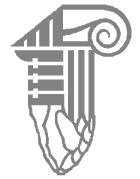 INSTYTUT ARCHEOLOGII I ETNOLOGII POLSKIEJ AKADEMII NAUK
INSTYTUT ARCHEOLOGII I ETNOLOGII POLSKIEJ AKADEMII NAUK
 INSTYTUT BADAŃ LITERACKICH POLSKIEJ AKADEMII NAUK
INSTYTUT BADAŃ LITERACKICH POLSKIEJ AKADEMII NAUK
 INSTYTUT BADAWCZY LEŚNICTWA
INSTYTUT BADAWCZY LEŚNICTWA
 INSTYTUT BIOLOGII DOŚWIADCZALNEJ IM. MARCELEGO NENCKIEGO POLSKIEJ AKADEMII NAUK
INSTYTUT BIOLOGII DOŚWIADCZALNEJ IM. MARCELEGO NENCKIEGO POLSKIEJ AKADEMII NAUK
 INSTYTUT BIOLOGII SSAKÓW POLSKIEJ AKADEMII NAUK
INSTYTUT BIOLOGII SSAKÓW POLSKIEJ AKADEMII NAUK
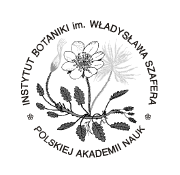 INSTYTUT CHEMII FIZYCZNEJ PAN
INSTYTUT CHEMII FIZYCZNEJ PAN
 INSTYTUT CHEMII ORGANICZNEJ PAN
INSTYTUT CHEMII ORGANICZNEJ PAN
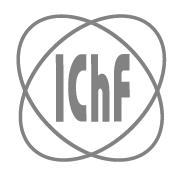 INSTYTUT FILOZOFII I SOCJOLOGII PAN
INSTYTUT FILOZOFII I SOCJOLOGII PAN
 INSTYTUT GEOGRAFII I PRZESTRZENNEGO ZAGOSPODAROWANIA PAN
INSTYTUT GEOGRAFII I PRZESTRZENNEGO ZAGOSPODAROWANIA PAN
 INSTYTUT HISTORII im. TADEUSZA MANTEUFFLA POLSKIEJ AKADEMII NAUK
INSTYTUT HISTORII im. TADEUSZA MANTEUFFLA POLSKIEJ AKADEMII NAUK
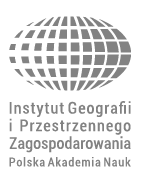 INSTYTUT JĘZYKA POLSKIEGO POLSKIEJ AKADEMII NAUK
INSTYTUT JĘZYKA POLSKIEGO POLSKIEJ AKADEMII NAUK
 INSTYTUT MATEMATYCZNY PAN
INSTYTUT MATEMATYCZNY PAN
 INSTYTUT MEDYCYNY DOŚWIADCZALNEJ I KLINICZNEJ IM.MIROSŁAWA MOSSAKOWSKIEGO POLSKIEJ AKADEMII NAUK
INSTYTUT MEDYCYNY DOŚWIADCZALNEJ I KLINICZNEJ IM.MIROSŁAWA MOSSAKOWSKIEGO POLSKIEJ AKADEMII NAUK
 INSTYTUT PODSTAWOWYCH PROBLEMÓW TECHNIKI PAN
INSTYTUT PODSTAWOWYCH PROBLEMÓW TECHNIKI PAN
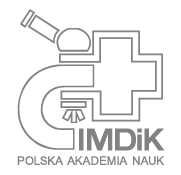 INSTYTUT SLAWISTYKI PAN
INSTYTUT SLAWISTYKI PAN
 SIEĆ BADAWCZA ŁUKASIEWICZ - INSTYTUT TECHNOLOGII MATERIAŁÓW ELEKTRONICZNYCH
SIEĆ BADAWCZA ŁUKASIEWICZ - INSTYTUT TECHNOLOGII MATERIAŁÓW ELEKTRONICZNYCH
 MUZEUM I INSTYTUT ZOOLOGII POLSKIEJ AKADEMII NAUK
MUZEUM I INSTYTUT ZOOLOGII POLSKIEJ AKADEMII NAUK
 INSTYTUT BADAŃ SYSTEMOWYCH PAN
INSTYTUT BADAŃ SYSTEMOWYCH PAN
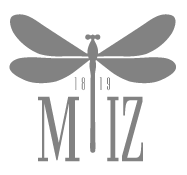 INSTYTUT BOTANIKI IM. WŁADYSŁAWA SZAFERA POLSKIEJ AKADEMII NAUK
INSTYTUT BOTANIKI IM. WŁADYSŁAWA SZAFERA POLSKIEJ AKADEMII NAUK
